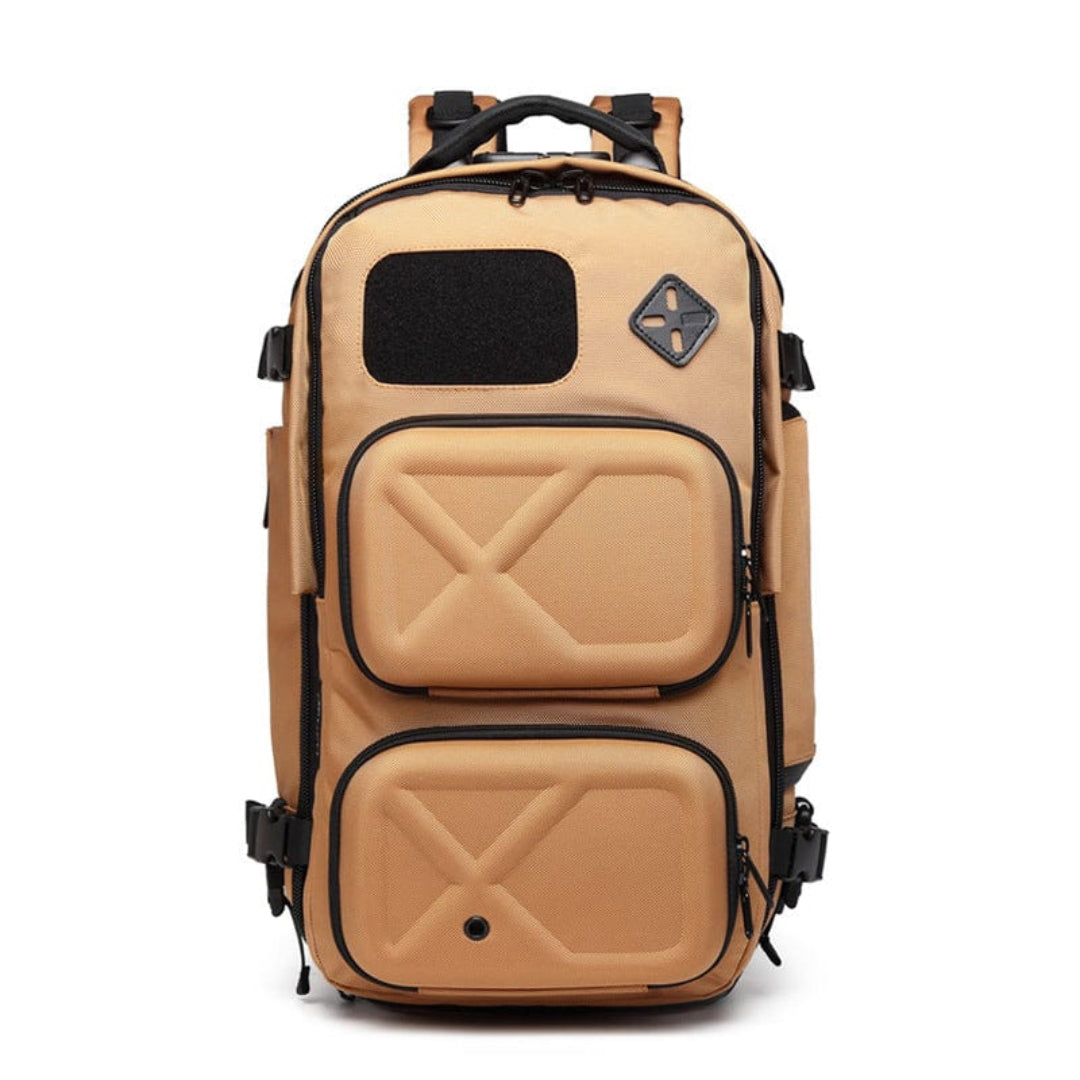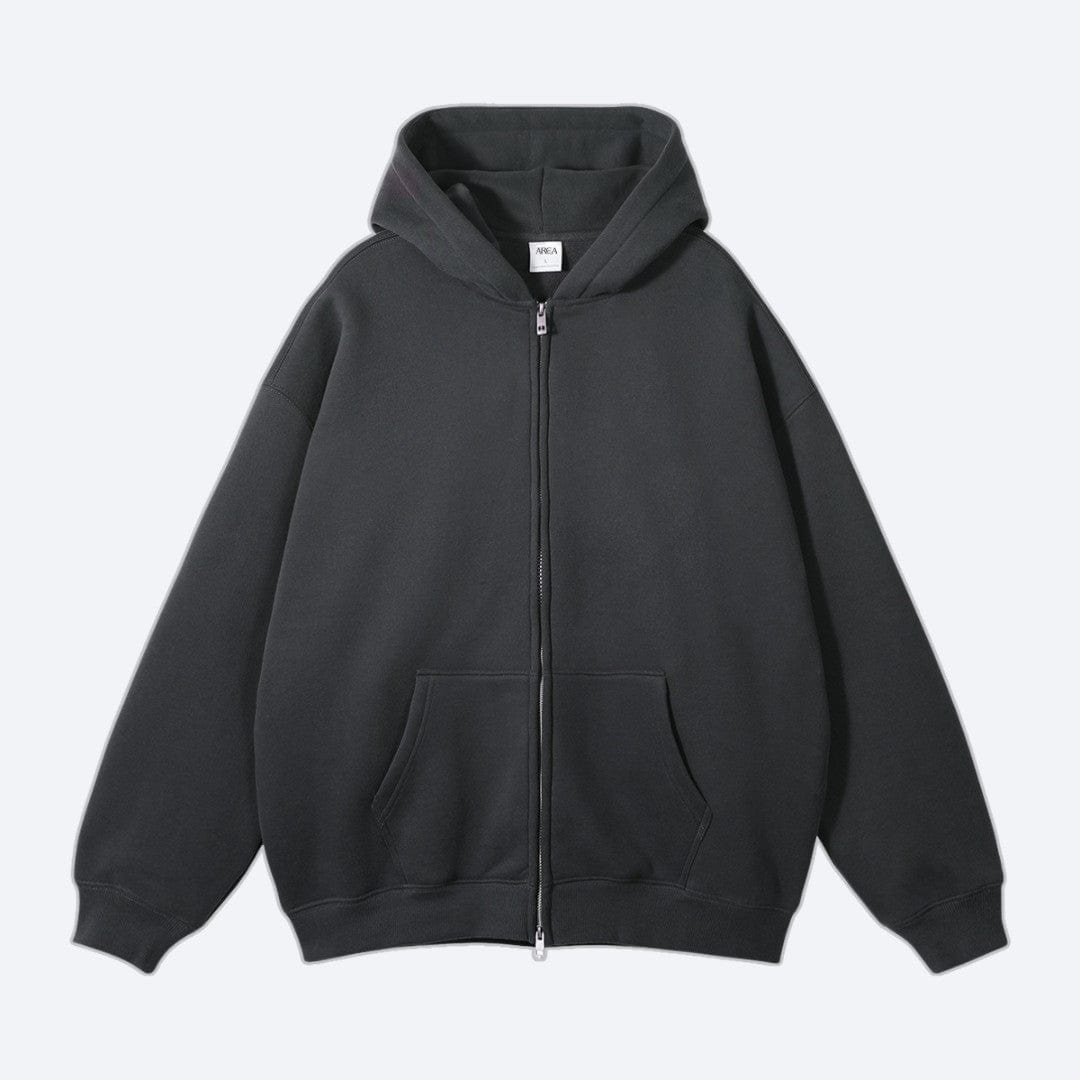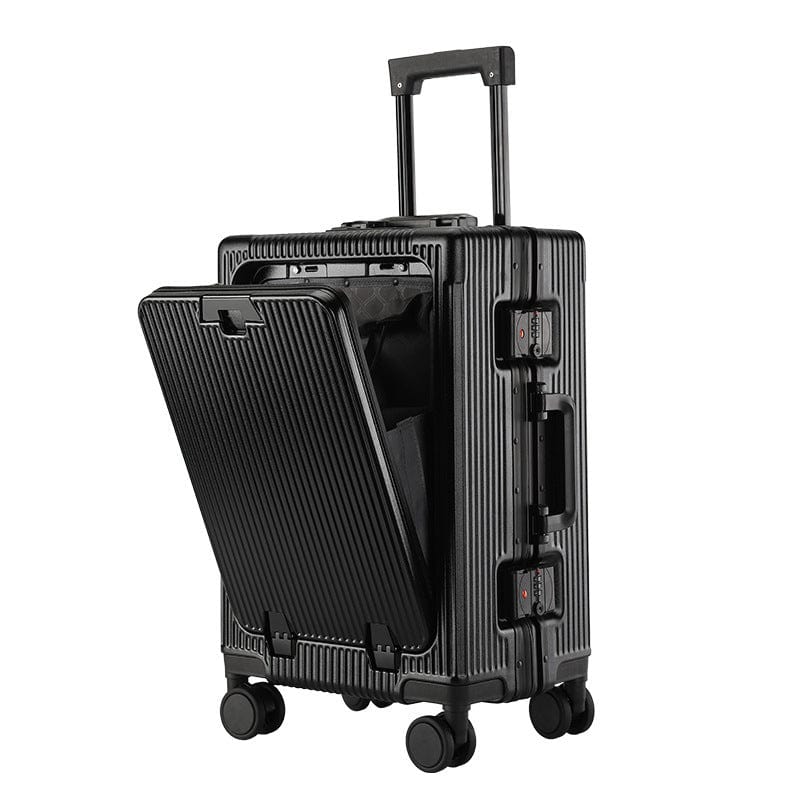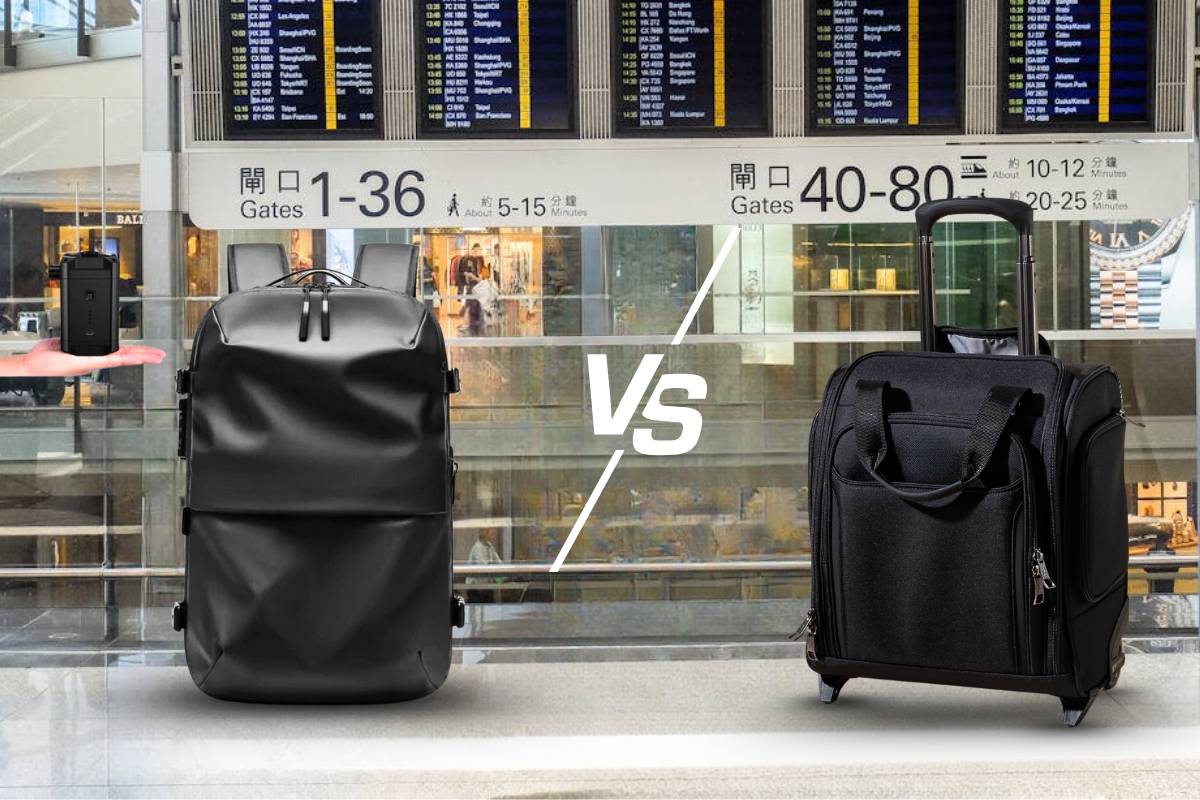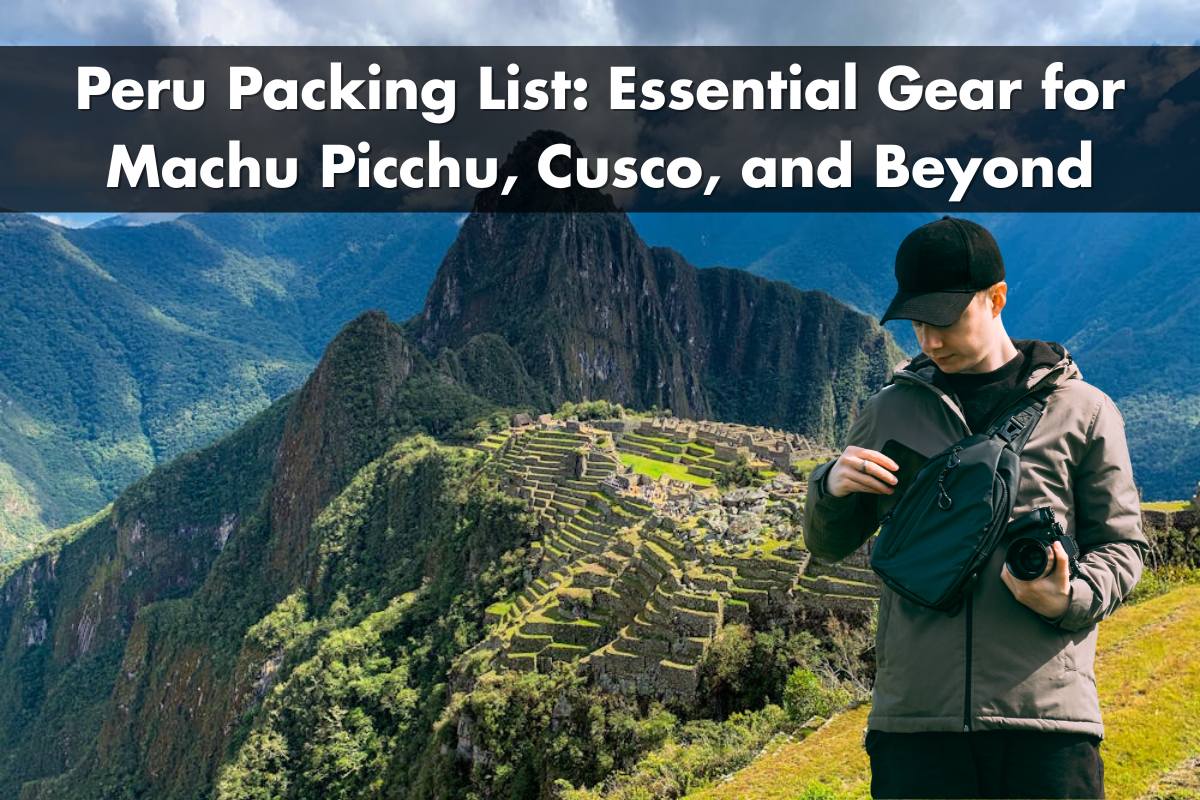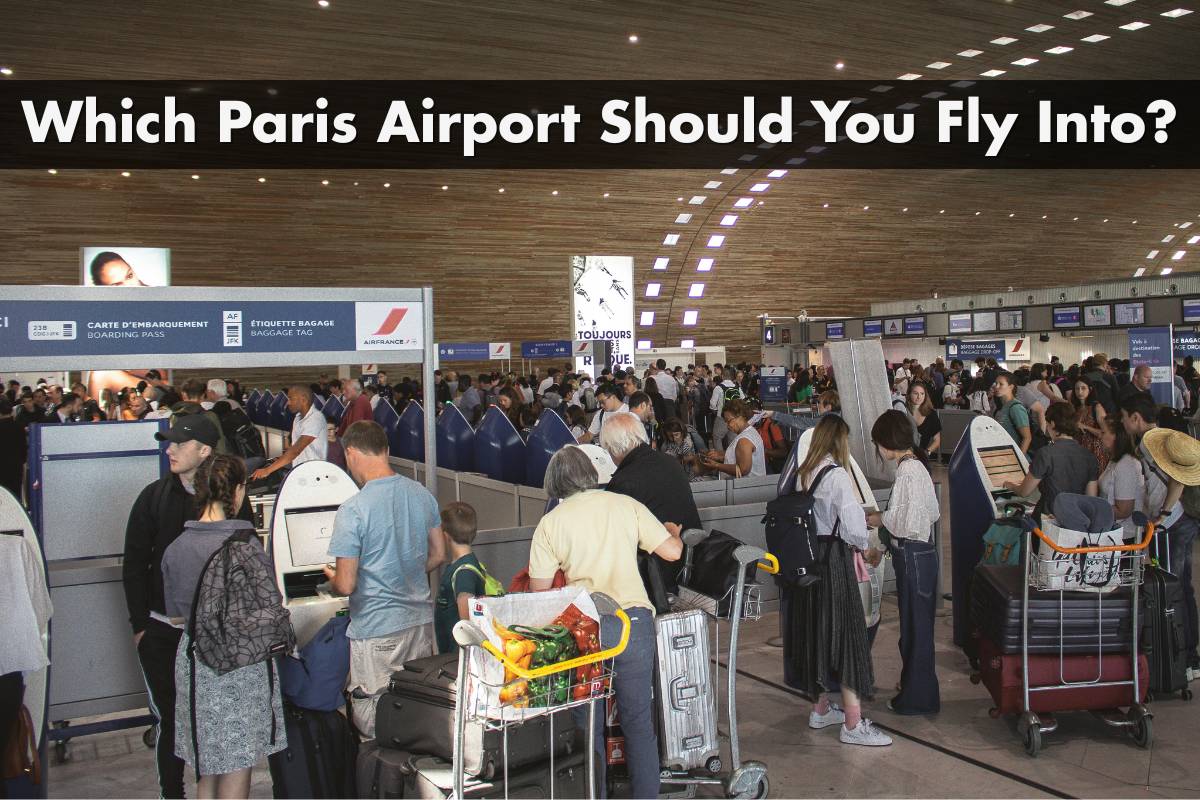Choosing between a backpack and a rolling bag can make or break your travel experience. Whether you’re dashing through crowded streets climbing stairs or hopping on public transport the right bag keeps you light on your feet and your essentials within reach. For quick overnight trips or same-day journeys a backpack offers unmatched mobility and quick access to your gear.
Tips for Choosing the Best Travel Bag
- Assess Trip Duration and Activities
Pick a travel bag that matches the length and nature of your trip. For overnight or short city breaks, a streamlined backpack boosts mobility and lets you move quickly. For longer trips or journeys with multiple formal events, rolling luggage offers more storage and organization, especially for multiple outfits or business attire.
- Evaluate Packing Needs
Consider the volume and type of gear you plan to bring. If you pack light and value adaptability, go with a carry on backpack—examples include 35L travel packs—since they suit minimalist packing and frequent gear access. For bulky items or several pairs of shoes, rolling bags provide compartments to separate clothing, electronics, and toiletries.
- Factor in Mobility and Comfort
Account for your physical needs and comfort level. Backpacks distribute weight across your shoulders and back, which feels lighter if you pack modestly. Rolling bags reduce physical strain and are practical for travelers who prefer not to carry weight, especially when navigating airports, hotels, or smooth floors.
- Consider Travel Environments
Match your bag to your main environments. Use backpacks for navigating busy streets, stairs, or uneven terrain since they're more agile. Choose rolling luggage for travel hubs with wide, smooth surfaces, such as airports and modern hotels, where pulling your bag causes less fatigue.
- Look for Organizational Features
Choose bags with built-in organizational systems. Backpacks with clamshell openings and multiple pockets keep daily essentials easy to reach. Rolling luggage with dividers and garment sections holds dress clothes and keeps everything in place during transit.
- Check for Hybrid and Modular Options
Opt for hybrid bags if you want versatility. Bags with detachable daypacks or hidden straps adapt to different scenarios, letting you transition from long-haul airports to day trips or short hikes without repacking.
- Prioritize Sustainable Materials and Build Quality
Select bags made from recycled, durable materials, such as bluesign-approved nylon, to reduce environmental impact and enhance durability. Reinforced wheels and robust chassis help rolling luggage last longer on cobblestone streets or rough sidewalks.
- Assess Style Preferences
Match your travel gear to your style. Rolling luggage presents a professional, polished look for business or formal travel. Backpacks and hybrids favor casual, adventure-focused trips with a focus on function and adaptability.
|
Feature |
Best for Backpack |
Best for Rolling Bag |
Examples (Brand/Type)
|
|---|---|---|---|
|
Trip Duration |
Short, <3 days |
Long, multi-day |
35L travel packs, carbon fiber carry-on |
|
Gear Volume |
Light/minimal |
Heavy/bulky (multiple shoes) |
Clamshell backpacks, compartment suitcases |
|
Mobility |
Stairs, uneven streets |
Airports, hotels |
Split duffel, robust-wheeled chassis |
|
Organization |
Quick-access pockets |
Divided clothing sections |
Modular daypacks, garment bags |
|
Style |
Casual/adventure |
Professional/formal |
Sleek rolling luggage, formal carry-on |
|
Material/Durability |
Recycled nylon |
Bluesign, reinforced wheels |
Everki, Skyborne, Cotopaxi |
Distribute your packing based on these features to ensure the best travel experience with your chosen bag.
Bag Breakdown
Backpacks and rolling bags use different structures and storage solutions to serve distinct travel needs.
Backpacks:
Travel Backpacks suit travelers who move between locations quickly and want both hands free. Models often range in size from 20L to 45L. Multiple compartments and external pockets organize everyday items like laptops, small electronics and chargers. Contoured padding and adjustable straps add comfort for extended carry. Compact form factors help you navigate crowds or use public transportation efficiently.
Rolling Bags:
Rolling bags provide larger storage options, usually 40L to 90L, and are built for travelers who prioritize capacity and easy movement in airports or hotels. Telescopic handles and wheeled bases reduce physical strain and support heavier loads. Full-zip main compartments and open-top configurations let you organize clothes, shoes and business supplies. Hard-sided versions upgrade protection for fragile or formal contents.

Feature Comparison Table
|
Feature |
Backpacks |
Rolling Bags
|
|---|---|---|
|
Capacity |
20–45 liters |
40–90 liters |
|
Primary Carry |
Over shoulders |
Wheels and handle |
|
Organization |
Multiple pockets, sleeves |
Divider sections, pouches |
|
Comfort |
Ergonomic, padded straps |
Minimal lifting, easy roll |
|
Mobility |
High in crowds, stairs |
Best on flat surfaces |
Backpacks and rolling bags each target specific user requirements for accessibility, organization and style. When you break down the luggage structure, it clarifies which bag matches your travel routine and volume.
When a Backpack is the Best Luggage for Long-Term Travel
Backpacks offer unmatched mobility for city travel, trekking, or changing locations frequently. You move through crowded streets, public transportation, and busy terminals more easily without dragging a rolling bag through uneven terrain. Standard backpack volumes range from 40L to 70L, supporting weeks of travel if you pack efficiently.
Hands-free carrying is valuable during long-term trips when you’re often walking, climbing stairs, or juggling tickets and mobile devices. Ergonomic features like padded shoulder straps, sternum straps, and load lifters spread weight and reduce fatigue during extended use. Backpacks with a front-loading or clamshell design also grant quick access to your gear without needing to unpack everything.
Organizational features in modern backpacks help you separate essentials: dedicated laptop sleeves, expandable sections, and zippered pockets keep electronics, documents, and toiletries secure. Compression straps help manage bulk and maintain a stable carry as contents shift during transit.
For minimalist travelers, a backpack encourages efficient packing. You carry only the necessary gear, which streamlines repacking in hostels or while catching early trains and buses. Lightweight designs with weather-resistant materials protect your belongings if your trip includes outdoor activities or unpredictable weather.
Backpacks excel for long-term journeys when you value adaptability, quick movement, and efficient organization in environments where rolling bags would slow you down.
2025 Update: The Best Backpack for Travel
Selecting the best travel backpack for travel in 2025 depends on travel environments, trip duration, and your organizational preferences. Top-rated travel backpacks now prioritize modular storage, advanced ergonomic support, and quick-access compartments. Features like weather-resistant materials and compression systems offer streamlined packing and protection.
Travelers moving between cities or using public transport benefit from backpacks in the 35L–45L range. These sizes—examples include Cotopaxi Allpa 35L and Peak Design 45L—fit as carry-on baggage, maximize mobility, and reduce bulk. Models with stowable straps and lockable zippers, as seen in updated Thule and Roamer Pro lines, provide added security and versatility for international or urban trips.
Innovative travel backpack features in 2025 include:
- Laptop Compartments: Padded, suspended sleeves protect devices up to 16 inches, meeting business travel requirements.
- Front-Loading Access: Clamshell openings grant visibility and access to clothing and accessories, minimizing unpacking time.
- Load-Lifting Adjusters: Built-in straps shift weight closer to your body, increasing comfort on walks over 1 mile.
- Modular Interiors: Removable dividers and packing cubes help organize tech, documents, or toiletries in separate sections.
- Weather Resistance: Coated fabrics and YKK zippers withstand rain, dust, and rugged transfers between transport hubs.
Backpacks in the 35L–50L range adapt well for overnight trips, multi-day city breaks, or frequent international flights. When traveling through crowded terminals or climbing stairs, you gain agility not offered by stiff rolling bag frames. Select models offer up to 10 exterior pockets, allowing fast access to passports, chargers, or snacks.
For 2025, manufacturers focus on lightweight builds under 4 lbs, durable polyester or nylon shells, and hidden pockets to guard valuables—addressing common travel security issues. Backpack colorways and streamlined silhouettes now complement professional attire, broadening use for business trips or remote work travel. Sustainability trends see more backpacks using up to 70% recycled fibers, supporting eco-conscious travelers.
Backpack selection tailors to your specific trip routines and environments. If navigating mixed terrain, riding multiple transit options, or packing for 1–10 days, modern travel backpacks outperform rolling bags for actionable mobility, flexible storage, and organizational support.
When a Wheeled Backpack is the Best Luggage for Long-Term Travel
Choosing a wheeled backpack optimizes comfort, storage, and convenience in long-term travel scenarios. Wheeled backpacks deliver the space and structure of rolling luggage with the flexible mobility associated with traditional backpacks, making them ideal for extended trips involving various environments.
Wheeled backpacks excel when you travel for weeks or months, especially when you pack bulkier items like boots or formal outfits. You keep weight off your back, using wheels instead of carrying everything, which reduces strain during airport transfers or long terminal walks. Hybrid models usually feature retractable handles and durable wheels, combined with padded backpack straps for situations requiring hands-free portability—like stairs, cobblestones, or uneven surfaces.
You benefit most from a wheeled backpack if you:
- Prefer moving between urban destinations with paved sidewalks, airports, and hotels.
- Need generous storage space—many offer 50L–70L, enough for extended travel gear or specialized equipment.
- Want sophisticated looks with reinforced construction for long journeys, frequent flights, and diverse climates.
- Value versatility, since hidden straps let you switch modes quickly and efficiently.
- Avoid carrying extra weight directly on your back, except for short distances.
Wheeled backpacks aren’t practical for backcountry hikes or off-road travel, since their structure and wheels add weight and complexity. If you expect mostly smooth floors, regular accommodation changes, or need to carry a broad range of clothing and electronics, then a wheeled backpack meets the demand for organization and adaptability.
|
Feature |
Wheeled Backpack |
Traditional Backpack |
Rolling Luggage
|
|---|---|---|---|
|
Average Capacity (L) |
50–70 |
40–70 |
40–90 |
|
Mobility |
Hybrid (roll/carry) |
Carry only |
Roll only |
|
Comfort |
Padded straps/wheels |
Ergonomic straps |
Telescopic handle |
|
Terrain Suitability |
Urban/airports/stairs |
Urban/trails |
Urban/airports only |
|
Storage Organization |
Multi-compartment |
Multi-compartment |
Large compartments |
|
Form Factor |
Semi-structured |
Soft/durable |
Structured |
Use a wheeled backpack when long-term travel blends urban navigation and demanding storage needs, supporting versatility and ease across shifting travel routines.
Before making a new luggage purchase, ask yourself, does the luggage have:
- Ergonomic support and comfort features
Padded shoulder straps, contoured back panels, and hip belts, for example, ensure balanced comfort and prevent strain across long distances or heavy loads.
- Customizable and organized storage
Multiple compartments, front panel openings, and dedicated laptop sleeves, such as those found in advanced travel backpacks, help keep devices and essentials separated for quick access.
- Mobility solutions for your environment
Wheeled bases with swivel casters, telescopic handles, and convertible backpack straps, found in rolling and hybrid bags, support smooth movement through airports, city streets, or public transport settings.
- Sufficient capacity for your trip type
Volume options like 20L–45L for daypacks, 40L–70L for travel backpacks, and 50L–90L for rolling suitcases, for example, ensure storage matches both short urban trips and long journeys with multiple outfits.
- Durability and sustainable materials
Heavy-duty zippers, water-resistant fabrics, and reinforced frames, such as those on professional travel bags, withstand frequent transit while lowering environmental impact.
- Security and protection for valuables
Lockable zippers, tamper-resistant pockets, and dedicated compartments for electronics keep items safe from theft and damage during transit.
|
Luggage Feature |
Backpacks |
Rolling Bags |
Hybrid Bags
|
|---|---|---|---|
|
Ergonomic Support |
Padded straps, contoured panels |
Top handles, basic side handle |
Both backpack and handle mode |
|
Customizable Storage |
Modular pockets, laptop sleeves |
Structured divider, open-top design |
Removable segments, pouches |
|
Mobility Solutions |
Shoulder carry |
Wheels, telescopic handles |
Backpack straps plus wheels |
|
Capacity Options (L) |
20–70 |
40–90 |
35–70 |
|
Durability Features |
Reinforced fabric, waterproofing |
Hard-shell frames, strong zippers |
Blend of both types |
|
Security Measures |
Hidden pockets, lockable zips |
Lock slots, internal pouches |
Mixed security features |
Review each feature in relation to your travel style before selecting between a backpack or rolling bag. Match the configuration to your priority for comfort, organization, and mobility.
Having an Extra Daypack
Adding an extra daypack to your travel system provides flexible carrying capacity for essentials during city outings, short hikes, or organized travel. Most daypacks range from 20L to 30L, fitting laptops, water bottles, and everyday items such as a light jacket or snacks. Many travelers use their daypack as a personal item on flights, housing electronics, travel documents, and valuables for easy access under the seat.
Splitting gear between a main bag and a travel daypack keeps your primary luggage organized and lighter while sightseeing or working remotely. Padded shoulder straps and separate compartments in models like the Pacsafe Venturesafe 25L help distribute weight comfortably and keep items secure. Side mesh pockets on daypacks hold water bottles for quick hydration, while zippered sections manage small accessories like chargers and wallets.
If space is limited, compressible or detachable daypacks, available on modular backpack or rolling bag systems, store flat for transport and deploy when you arrive at your destination. Lockable zippers and hidden pockets in many daypacks increase security for urban and transit travel, reducing the risk of theft. Rolling bags with dedicated daypack attachments let you switch from wheeled to on-foot travel instantly, maintaining mobility across airports, cities, and trailheads.
Rear main bags often stay in hotels or transit lockers—combining them with a daypack gives you a lightweight, organized option for daily exploration, shopping, or spontaneous adventures. Carry-on regulations commonly allow a separate daypack in addition to your main bag, enhancing flexibility on international and domestic routes.
Extra tips
When you're choosing between a backpack or rolling bag don't forget to test how each one feels when fully packed. Try walking around your home or up and down stairs to see which option suits your comfort level and mobility needs.
Always check airline carry-on size limits before you buy. Some bags that claim to be carry-on friendly may not fit stricter international requirements.
If you travel often investing in high-quality zippers and weather-resistant materials pays off in the long run. Look for brands that offer warranties or repair services so your bag lasts trip after trip.
Finally keep your packing list minimal and stick to essentials. The right bag should make your journey smoother not weigh you down.


